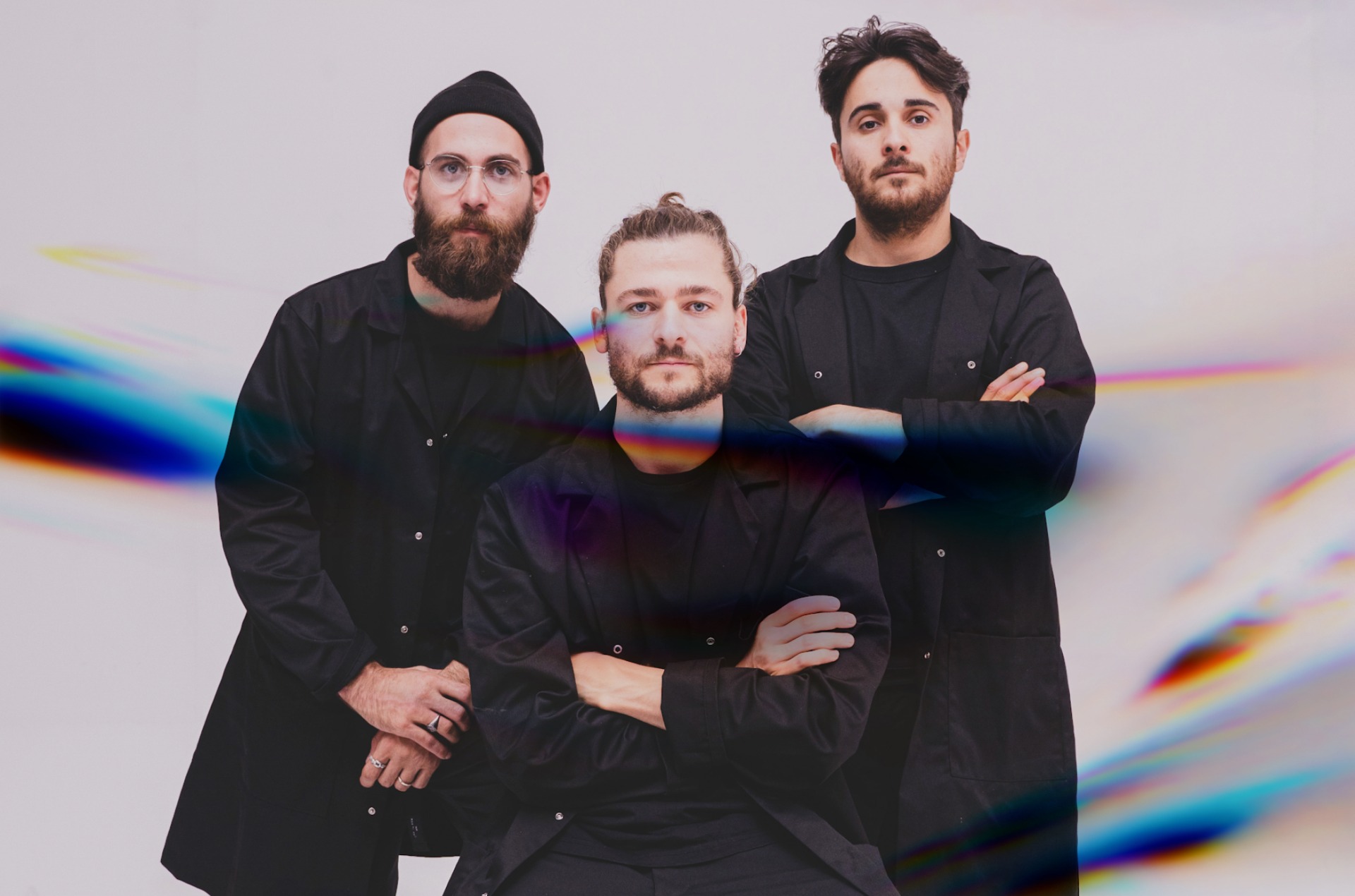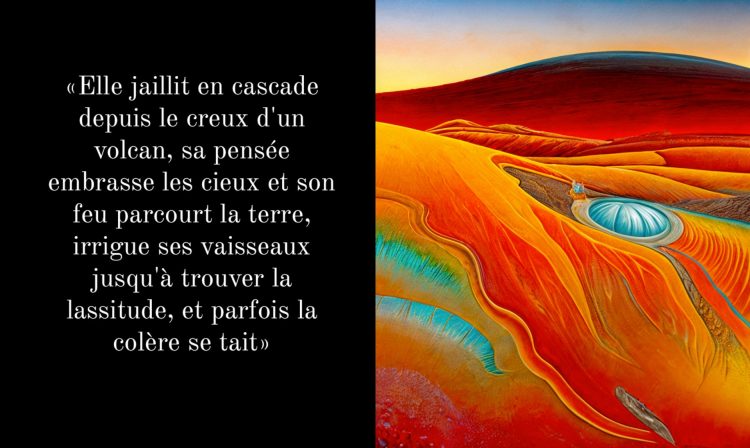
From Christie's to the Sorbonne, a lucid journey through art and science
In this exclusive interview, we have the pleasure of diving into the fascinating world of Obvious, a group of artists standing at the crossroads of art and science. Through the words of Gauthier Vernier, co-founder of Obvious, discover the compelling story of their origins, historic achievements and bold vision of the future, where art and technology come together to push the boundaries of creativity.
To kick off this interview, can you briefly introduce the genesis of Obvious as well as your background, especially for our readers who may not know you yet?
Gautier Vernier, co-founder of Obvious Group : The idea for Obvious was born in 2017, when Hugo, an AI researcher, found a scientific paper describing Generative Adversarial Networks (GANs), and shared this discovery with Pierre and me, while we were sharing an apartment. Discovered in 2014, these algorithms are little known and even less used. However, their abilities fascinate us, and their work raises our questions. We then decide to create artworks using these algorithms, to ask as many people as possible these questions.
One of the works from our first series took center stage very quickly: Edmund de BellamyIt was sold at auction at Christie's New York in 2018 for $435,000. We have been working on creating art using artificial intelligence algorithms ever since. Our series questions humanity's complex relationship with technology, fueled by both fear and hope for what seems to escape control.
Our collection addresses this topic through its series that can be physical or digital (Obvious is also the first French artist to create NFTs), guided by the prevailing belief that science and art are two concepts that feed each other, and that the technological revolution we are experiencing calls for an artistic renaissance.
The past year has been an eventful one for Obvious, between your integration into the Danysz Gallery, the Canal+ documentary (produced by Médiawan) that traces your extraordinary journey, and your scientific research partnership with the Sorbonne University in Paris. Can you tell us the most notable moments from these experiences?
Gautier Vernier : Last year was really a turning point for us. first and foremost, Documentary on Canal+ Revisiting our early years as artists allowed us to do a retrospective on our first five years. Through this documentary, we were able to appreciate and share the time we spent together, the path we have come, including our series, our entry into the exhibition, and our collaborations with brands and institutions such as Alpine, Lapierre, or even the Paris Opera. , our work has been shown in the greatest museums in the world, and all the wonderful encounters made along the way.
This year also saw the realization of our vision of a new model, a unique entity dedicated to academic research and artistic creation. This entity benefits from the support of the Sorbonne University and the National Research Agency for the scientific aspect, and from Obvious's reputation in the world of art. It embodies the synergy between art and science, a virtuous circle that we intend to develop, and that allows us to develop new scientific methods connected to our artistic needs, whether they are inherent in Obvious or whether brands have brought them in for collaboration, and to share our scientific discoveries with more people through art. .
Can you tell us more about your current scientific project, from its beginnings to its current state of development, as well as your collaboration with your partners?
Gautier Vernier The first axis that we wanted to explore with this new model is the axis Mind to imageOr algorithms capable of reconstructing images from brain data. These pieces are driven by our quest as artists to express our purest thoughts and deepest souls. We were therefore interested in algorithms capable of reconstructing images directly from the mind's perceptions. So we started a series of experiments involving image visualization in MRI. This approach has resulted in a scientific discovery of the process of creating images that represent our thoughts.
What are the next steps planned for this project? Can you enlighten us about its economic model?
Gautier Vernier : In order to activate our symbiotic vision of art and science, this project has ramifications in the world of research, as well as in the world of art. We first published a scientific article in collaboration with Charles Millerio, MD, a neurologistICM, Institute for Brain Research, accurately describing the approach we tried. This open source paper aims to advance science.
Besides this, we are developing a series of physical and digital works, in order to present this concept in an artistic way.
This series will be shown in October 2024 at the exhibition Danishand was chosen by the Center Pompidou to be part of a trip organized jointly by the Professional Committee of Art Exhibitions and the André Breton Society to accompany the great exhibition. outside the walls which will celebrate the centenary of Surrealism in the fall At the Pompidou Centre.
The idea is that collectors, by purchasing works, finance artists' activities, which for us are no longer limited to conceptual and visual creativity, but also to scientific research and the sharing of new creative tools. In fact, all of our research developments are shared as open source.
As a trio of visionaries, where do you see clarity in 5 years? What challenges do you face to achieve this vision? What brands, companies, institutions or laboratories do you dream of collaborating with?
Gautier Vernier : Given the development we have witnessed over the past five years, it is very difficult to predict what will happen in the next five years. However, we have a clear vision, which is to push the synergy between art and science to its peak. We do not believe that we have invented anything, and this vision was very present in the Renaissance. Therefore, we can hope to develop in the manner of the Renaissance workshop, a physical place where researchers and artists meet and put their talents at the service of ambitious projects, both artistically and technically. Just as these workshops had sponsors, we are keen to work with companies, in order to discover new horizons and face new challenges. Our interest is in ambitious initiatives, and we dream of collaborating with those who represent excellence, both in science (OpenAI, Large Hadron Collider, Deepmind, Neuralink, Project CETI, Arctic Code Vault), in art (MoMA, Le Louvre, Vasarely Fondation, Leeum Museum) and culture. (The Sphere, Balenciaga, Arctery'x, Salomon, Nike, Lacoste, Paris SG).
We are also open to collaborating with other artists on projects that allow for the sharing of skills and visions. Obviously we want to continue bringing our creativity to the general public through museums.
Read also : Emmanuel Macron, the star chef of French gastronomy

“Organizer. Social media geek. General communicator. Bacon scholar. Proud pop culture trailblazer.”

